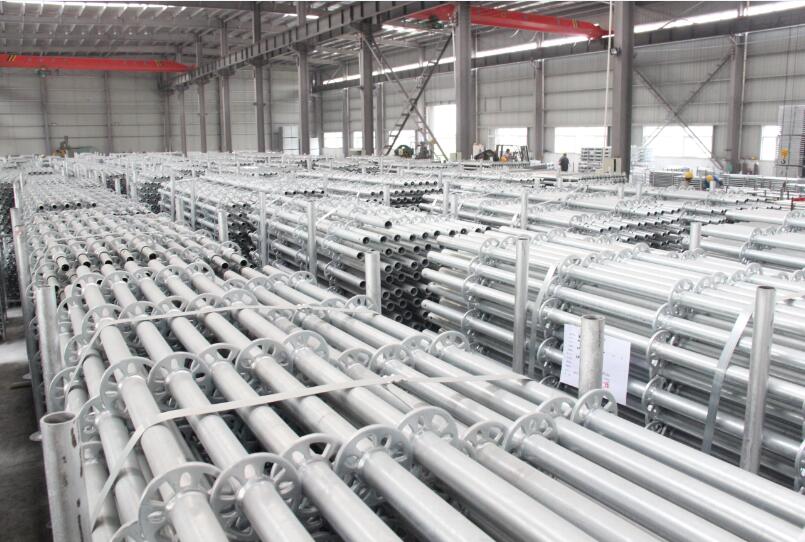
For buyers in the construction industry, investing in a Ringlock scaffolding system is a strategic decision. Known for its high strength, quick assembly, and versatility, Ringlock scaffolding has become the preferred choice for modern projects around the world. However, buyers often find that prices can vary significantly between suppliers. Understanding the key factors that affect the cost of a Ringlock scaffolding system helps procurement professionals make smarter, value-driven purchasing decisions.
From materials and production technology to design features and supplier reliability, several elements play a crucial role in determining both the price and the long-term return on investment.

1. Material Quality and Type
One of the biggest cost determinants is the material used in manufacturing the scaffolding components. Most Ringlock systems are made from high-strength carbon steel or galvanized steel, though the specific grade and coating process can greatly influence the price.
Carbon Steel: Provides excellent strength and load-bearing capacity, ideal for heavy-duty applications. Systems made from premium-grade Q345 steel typically cost more but offer superior performance and longer service life.
Galvanized Finish: Hot-dip galvanization adds corrosion resistance and durability, essential for outdoor or long-term projects. While it raises initial costs slightly, it reduces maintenance expenses and replacement frequency over time.
For buyers, it’s important to view material cost not as an expense, but as a long-term investment in safety and reliability.

2. Manufacturing Technology
Advanced production technology also affects the final cost of a Ringlock scaffolding system. Precision engineering, automated welding, and strict quality control ensure that every component fits perfectly and performs consistently on-site.
Suppliers that use automated robotic welding produce joints with uniform strength, minimizing the risk of weak points. Similarly, CNC cutting and drilling improve accuracy, ensuring that rosettes and vertical standards align flawlessly.
While suppliers employing these technologies may offer a slightly higher unit price, buyers benefit from fewer assembly issues, faster installation, and reduced safety risks. The result is improved project efficiency and lower labor costs—factors that can outweigh initial price differences.
3. Structural Design and Features
Ringlock scaffolding systems are valued for their modular design, which allows for quick assembly without loose fittings. However, not all systems are designed equally. Features such as thicker wall tubes, reinforced rosettes, and high-quality wedges influence both performance and cost.
Buyers should pay attention to:
Tube thickness: Thicker tubes enhance load capacity but add to material cost.
Rosette design: Precision-cut rosettes ensure tight connections and improve safety.
Surface treatment: Uniform galvanization or powder coating extends lifespan and maintains appearance.
These design enhancements may raise upfront costs but deliver long-term economic benefits through reduced wear, fewer replacements, and higher safety standards.
4. Supplier Reputation and Service
Beyond the product itself, a reliable supplier significantly impacts total project costs. Inconsistent quality, delayed shipments, or lack of after-sales support can lead to major losses in time and money.
This is where ADTO Scaffold stands out as a trusted global supplier. With over 25 years of experience, ADTO offers a complete range of Ringlock scaffolding systems manufactured using high-grade materials and advanced production technology. The company adheres to international standards such as EN12810 and AS/NZS1576, ensuring buyers receive safe, durable, and fully compliant systems.
Moreover, ADTO provides:
Competitive factory pricing through large-scale production
Customized design options for diverse construction needs
Comprehensive quality inspection reports for every shipment
Efficient packaging and global logistics to ensure timely delivery
For buyers seeking dependable supply, professional service, and genuine long-term value, ADTO Scaffold is a partner worth trusting.
5. Market Conditions and Order Volume
Finally, external market factors such as raw material prices, shipping costs, and order quantity also influence the total cost. Steel price fluctuations or rising freight rates can cause short-term price changes. Buyers who plan their purchases strategically—ordering in bulk or coordinating with a stable supplier like ADTO—can often secure more favorable terms.
Conclusion
The cost of a Ringlock scaffolding system depends on a combination of material quality, production technology, structural design, supplier reliability, and market conditions. For professional buyers, focusing solely on price is not enough; evaluating long-term performance, safety, and supplier credibility is essential.
By partnering with a reputable manufacturer such as ADTO Scaffold, buyers gain access to durable, compliant, and competitively priced Ringlock systems—backed by consistent service and technical support. In the long run, investing in high-quality scaffolding is not just a purchase, but a strategic move toward safer, more efficient, and more profitable construction operations.










